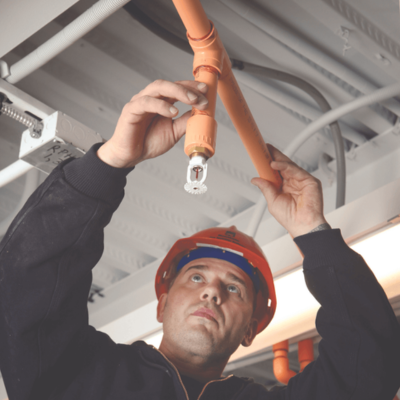Understanding BS 9251
-
BS 9251:2021 is crucial for designing fire protection systems in domestic and residential environments, distinguishing it from BS EN 12845 which covers commercial properties.
-
This standard serves as a guide for professionals ranging from system designers to installers, highlighting best practices rather than legal mandates.
-
Recent updates to BS 9251 include new building categories, modified sprinkler head spacing, and expanded guidance on water supplies and preliminary work.
BS 9251:2021 represents a significant evolution in the standards for domestic and residential fire sprinkler systems. Set apart from BS EN 12845, which focuses on commercial and industrial facilities, BS 9251 is tailored specifically toward domestic and residential settings such as homes, apartments, and residential care premises.
Comprehensive Overview of BS 9251:2021
Developed by a diverse committee including the British Automatic Fire Sprinkler Association (BAFSA), Building Research Establishment (BRE), and Fire Rescue Service, BS 9251:2021 provides updated, detailed guidance tailored to modern needs. This document is designed to aid a wide array of professionals including architects, engineers, contractors, and authorities having jurisdiction (AHJs) in the implementation of effective fire sprinkler systems.

Implementing Best Practices from BS 9251:2021
BS 9251:2021 introduces significant revisions to accommodate varying levels of occupancy risk, distinguishing three primary categories:
Category 1: Includes individual homes, small housing complexes, bed and breakfast accommodations, and boarding houses, addressing buildings up to 18 metres in height.
Category 2: Comprises larger structures such as blocks of flats higher than 18 metres and includes small residential care premises.
Category 3: Encompasses larger residential care facilities, dormitories associated with educational establishments, and hostels.
These categories guide the application of system specifics like sprinkler head density and spacing, and provide more extensive recommendations regarding water supply and preliminary work. These updates aim to enhance the efficacy and responsiveness of fire sprinkler systems under different residential scenarios.
Forward-thinking Standards Adoption
BS 9251:2021 is a testament to the industry’s commitment to improving fire safety in residential settings. With updates that reflect current living situations and technological advancements, it continues to be an essential resource for professionals dedicated to safeguarding lives and properties. Everyone involved in the fire protection industry, from design to installation, is encouraged to integrate these standards into their practices to ensure optimal safety.
For more detailed insights on implementing BS 9251:2021 in your fire protection strategies and learning about compatible materials like CPVC, download the CPVC fire sprinklers guide here.
TRUSTED PERFORMANCE
FOR LIFE
Partner with BlazeMaster® Fire Protection Systems, the most specified nonmetallic fire sprinkler systems in the world, offering easy installation, inherent corrosion resistance and excellent flame and smoke characteristics.
TRUSTED PERFORMANCE
FOR LIFE
Partner with BlazeMaster® Fire Protection Systems, the most specified nonmetallic fire sprinkler systems in the world, offering easy installation, inherent corrosion resistance and excellent flame and smoke characteristics.

